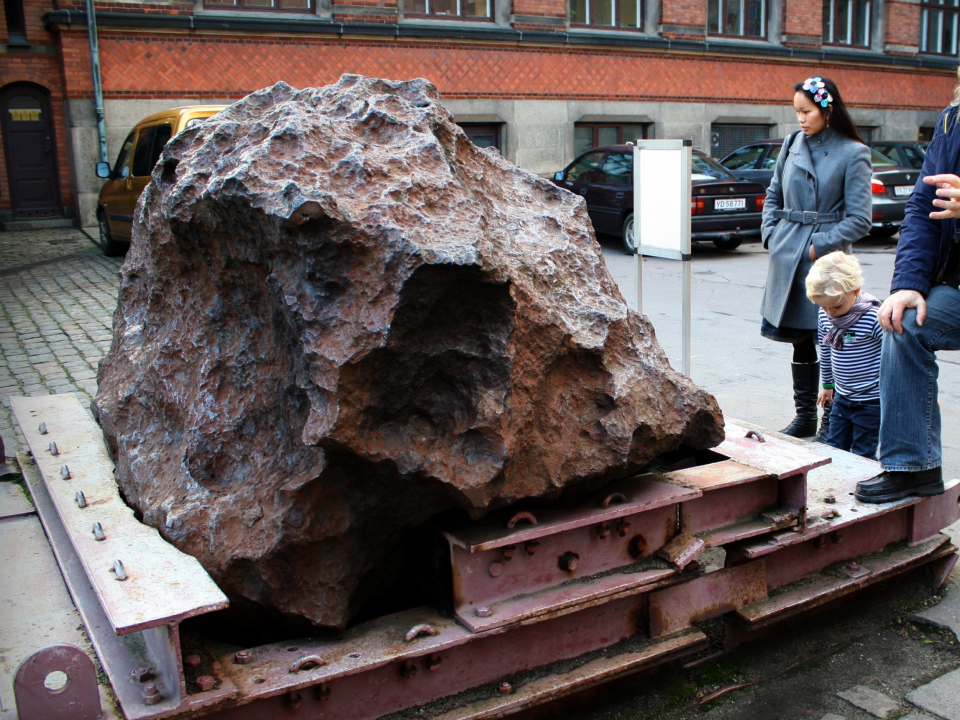A 5-billion-ton chunk of iron once slammed into Greenland, leaving a crater big enough to hide Paris in
Greenland is hiding an explosive secret under its thick ice sheet.
In 2015, researchers created a new map of the continent's bedrock, which is normally obscured by thousands of metres of ice. When an international team of scientists studied that map, they found a 25km wide, bowl-like depression - it looked like a giant asteroid impact crater.
The scientists wanted to be sure, though, since this would be the one of the 25 largest impact craters on Earth. So they shored up evidence for the claim over the next three years.
In a study published Wednesday in the journal Science Advances, the team reports that there is indeed a crater, which was made by an iron asteroid nearly 1km across, slamming into Greenland between 12,000 and 3 million years ago.
Here's how the group made this remarkable discovery - and why it should worry us today.
The bedrock maps show that the depression measures about 25km across and is under more than 1000 metres of ice.
If you could lift up the entire city of Paris and drop it into the bowl-shaped feature, it'd fit with room to spare.
The research team, led by Kurt Kjær at the Natural History Museum of Denmark, are calling it the Hiawatha impact crater, since the Hiawatha Glacier covers the depression.
Kjær and his colleagues said they knew the depression "was something special." Scientists have long been aware that iron meteorites hit Greenland in the past, because a 22-ton fragment of an iron meteorite was previously found near Hiawatha Glacier. That now sits in the Geologisk Museum in Copenhagen.
Source: Natural History Museum of Denmark
"It was therefore not such a leap to infer that the depression could be a previously undescribed meteorite crater, but initially we lacked the evidence," Nicolaj Larsen, a geoscientist at Aarhus University and a member of the research team, said in a release.
Source: Natural History Museum of Denmark
So the team flew over and mapped the depression in more detail. They also gathered sand at the edge of glacier, since the giant, slow-moving block of ice likely scraped particles off the bedrock below — including parts of the depression.
Most of Greenland is covered in an ice, a process that began about 3 million years ago. The ice is nearly 3km thick in some locations, which has obscured almost all of the continent's bedrock.
But ice-penetrating radar surveys by aeroplane, as well as satellite measurements, have allowed researchers to map Greenland's hidden bedrock.
Source: National Geographic
That's how the research team found the impact site in the northwestern reaches of the continent.
In studying the sand grains, researchers discovered several hallmarks of a big meteorite strike. They estimate that the rock that hit Greenland was about 965 metres wide and made almost entirely of iron. That means it may have weighed about 5 billion tons.
Source: Impact Earth!
Space rocks remain a threat to Earth today. NASA and other organisations scan the skies for near-Earth asteroids, but many experts believe we aren't doing enough to detect such dangers. About 20% of the potentially dangerous asteroids similar in size to the one that made the Hiawatha crater have yet to be discovered.
Source: Business Insider
New telescopes, like NEOCam — the Near-Earth Object Camera — could detect about 90% of asteroids that could wipe out a city. That tool is more or less ready to launch into space, but the US government is dragging its feet on fully funding the project.
Source: Business Insider

 Yahoo Finance
Yahoo Finance 












